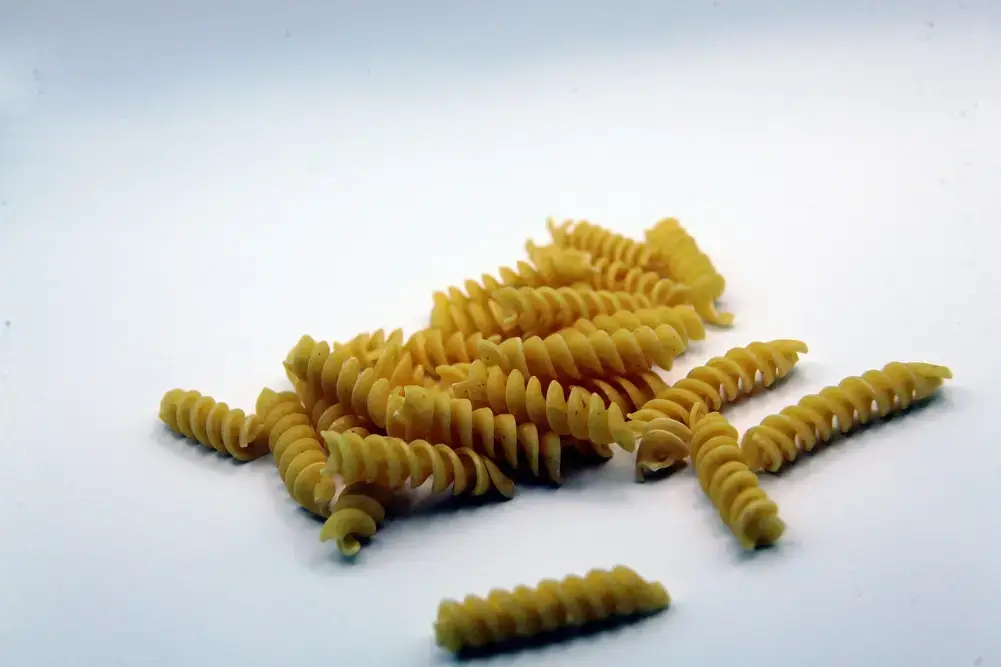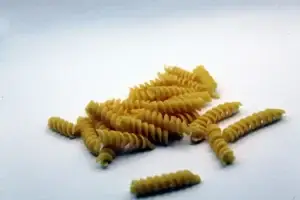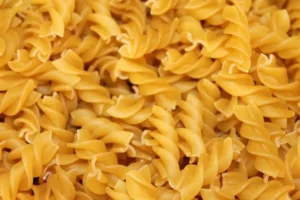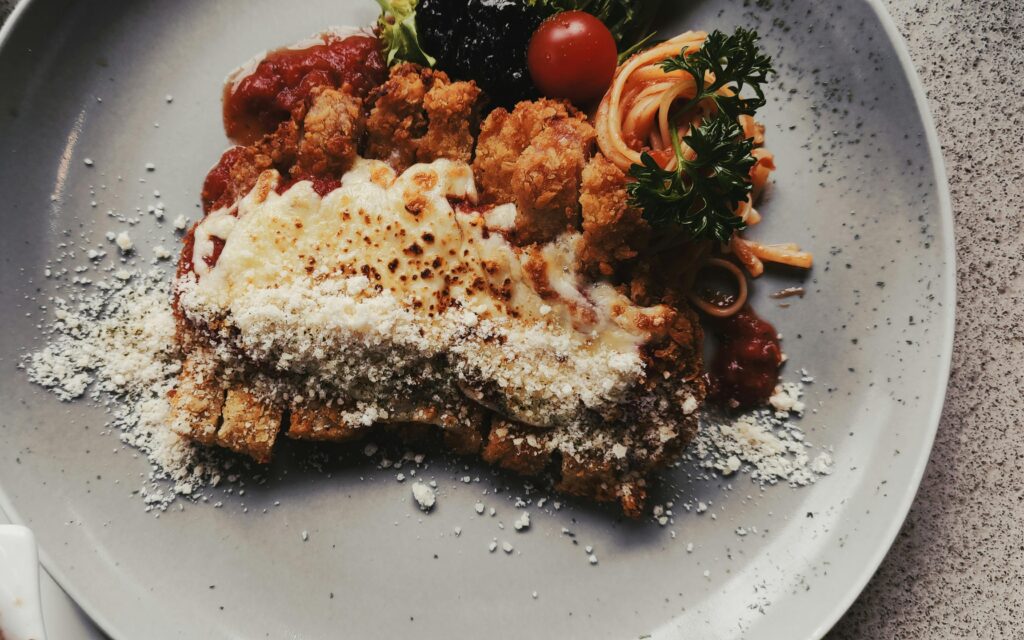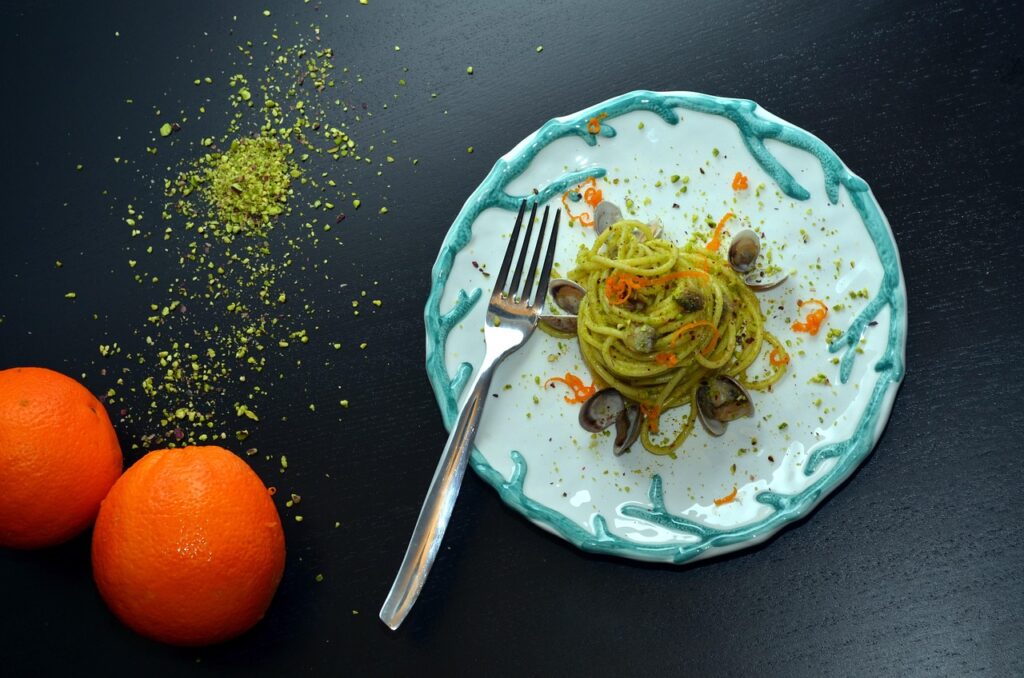Delicious Guide to Fusilli Pasta: 10 Secrets for Perfect Twists Every Time
Fusilli
Definition?
Fusilli is a ribbon of pasta twisted into tight spirals. The corkscrew shape increases surface area and creates grooves that hold sauce, bits of meat, and vegetables.
Short dried fusilli suits salads and quick sauces. Longer or larger versions, like fusilloni, work with heavier ragùs and oven dishes.
History and variants
The name derives from fusillo, meaning small spindle. Makers either wrap dough around a rod or extrude it through a die. That split explains some variant names: fusilli bucati (hollow), fusilloni (large spirals), and fusilli lunghi (longer spirals).
Regional terms sometimes overlap. For definitions and variant names, reference Wikipedia’s Fusilli entry for authoritative coverage.
Variants you will see in stores.
- Short fusilli — standard everyday spirals
- Rotini — similar spiral shape, often used interchangeably
- Fusilloni — larger spirals for chunky sauces
- Fusilli bucati — hollow center in some artisan versions
- Tri-color fusilli — visual variety for salads

How to cook it (tested times and tips)
It cooks like most dried pastas but responds differently to finishing because the grooves keep heat and sauce. Use enough water, salt it generously, and keep a close eye in the final minutes.
Basic method
Bring 4 to 6 liters of water to a rolling boil for every 500 g of pasta. Add 10 g salt per liter. Stir once after adding pasta to prevent sticking. Follow package times but always taste early.
Tested cooking times
We tested common short dried across brands. Times vary by thickness and manufacturer. Use these as a guide:
- 7 minutes — still firm, undercooked for most tastes
- 8 to 10 minutes — typical al dente range for many brands
- 11 minutes or more — soft, better for baked pasta dishes
Tip: Under-cook by 30 to 60 seconds if you plan to finish the pasta in sauce or oven bake it. Reserve one cup of cooking water before draining; its starch helps the sauce cling.
Finishing technique
Do not rinse when serving hot. After draining, toss the pasta into the pan with the sauce, add a splash of reserved water, and cook together for 30 to 90 seconds. That step makes the sauce glossy and more cohesive.
Best sauces and pairings
It works well with sauces that offer texture. The shape shines when sauce ingredients can lodge in the spirals.
Pesto and herb sauces
Pesto clings to the grooves and disperses flavor evenly. Use a robust basil pesto or a walnut pesto for variation.
Cheese and cream sauces
Thicker cream sauces with grated cheese and lemon zest nestle into the spiral ridges. Four-cheese or garlic-parmesan styles deliver on texture and richness.
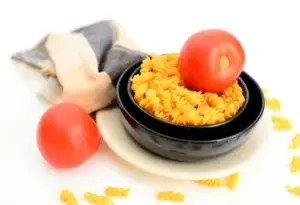
Chunky ragù and vegetable ragouts
Tomato-based ragù with minced meat or chunky roasted vegetables benefits from the spiral shape. Each bite mixes sauce and solids.
Cold pasta salads
It traps dressing and mix-ins like olives, feta, and cherry tomatoes. Dress slightly warm to let flavors marry, then chill to serve.
Top recipes to try
Below are concise, tested recipes you can use as base templates—scale portions as needed.
1. Garlic-Parmesan Fusilli (serves 4)
Cook 400 g of it to al dente, reserving 1 cup pasta water. Sauté 3 sliced garlic cloves and one red chili flake in 3 tablespoons olive oil until fragrant. Add two tablespoons butter, 1/2 cup reserved pasta water, cooked pasta, 3/4 cup grated Parmesan, and toss. Finish with lemon zest and black pepper.
2. With Pesto and Roasted Cherry Tomatoes (serves 4)
Roast 400 g halved cherry tomatoes with olive oil and salt at 200C for 18 minutes. Cook 400 g fusilli and toss with 1 cup basil pesto, the roasted tomatoes, and torn mozzarella. Serve warm or room temperature.
3. Baked with Sausage and Spinach (serves 4)
Brown 400 g Italian sausage in a skillet, add 700 g passata and simmer 10 minutes. Par-cook 400 g fusilli for 6 minutes, drain, combine with sauce and 150 g spinach, transfer to a baking dish, top with 200 g shredded mozzarella, and bake at 200C for 16 minutes.
Buying guide and types
Choose pasta based on texture preferences and dietary needs.
Bronze-cut vs regular
Bronze-cut pasta shows a rough surface that holds sauce better. It often costs more but offers a more rustic mouthfeel.
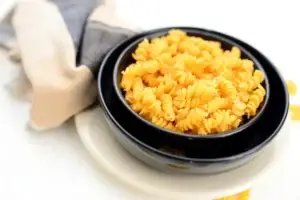
Whole-wheat and gluten-free options
Whole-wheat adds nuttiness and fiber. Gluten-free variants made from rice, corn, or legumes behave differently and may require gentler stirring and slightly altered times.
Brands and where to buy
For everyday use, major grocery brands work well. For artisan shapes and bronze-cut textures, check specialty food shops or online retailers that list production methods.
Make it at home (quick method)
Hand-formed has charm. You can make a rustic version without specialist equipment.
Ingredients: 200 g 00 flour, two eggs, pinch salt. Make a firm dough, rest 20 minutes, roll thin, cut 1-cm strips, wrap each strip around a thin rod or skewer, slide off to form a spiral, dry 20 to 30 minutes, and cook briefly in salted water.
Related videos and demonstrations
Watch practical demonstrations to see finish techniques and plating. These links show straightforward, replicable methods.
- Quick fusilli pasta recipe – YouTube
- Garlic cheese fusilli – YouTube
- Fusilli with roasted tomato pesto – YouTube
FAQ
Is fusilli the same as rotini?
Many sources use the terms interchangeably. Some brands label one or the other, but cooking and function remain similar.
How long should I cook fusilli for al dente?
Start tasting 1 to 2 minutes before the package time. Most short dried shapes reach al dente between 8 and 10 minutes.
Can I use it in a baked pasta?
Yes. Under-cook slightly, combine with sauce, then bake until bubbly so the pasta finishes cooking and absorbs flavor.
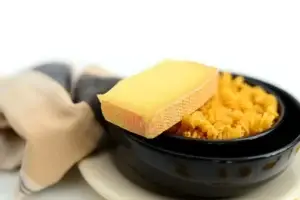
References and links
Include these dofollow external references to support facts and to give readers proper further reading.
Internal links
Link these pages on Pastaloverz to strengthen topical authority and user navigation.
- Types of pasta — Pastaloverz
- Pasta recipes — Pastaloverz
- Tortiglioni guide — Pastaloverz
- Paccheri guide — Pastaloverz
